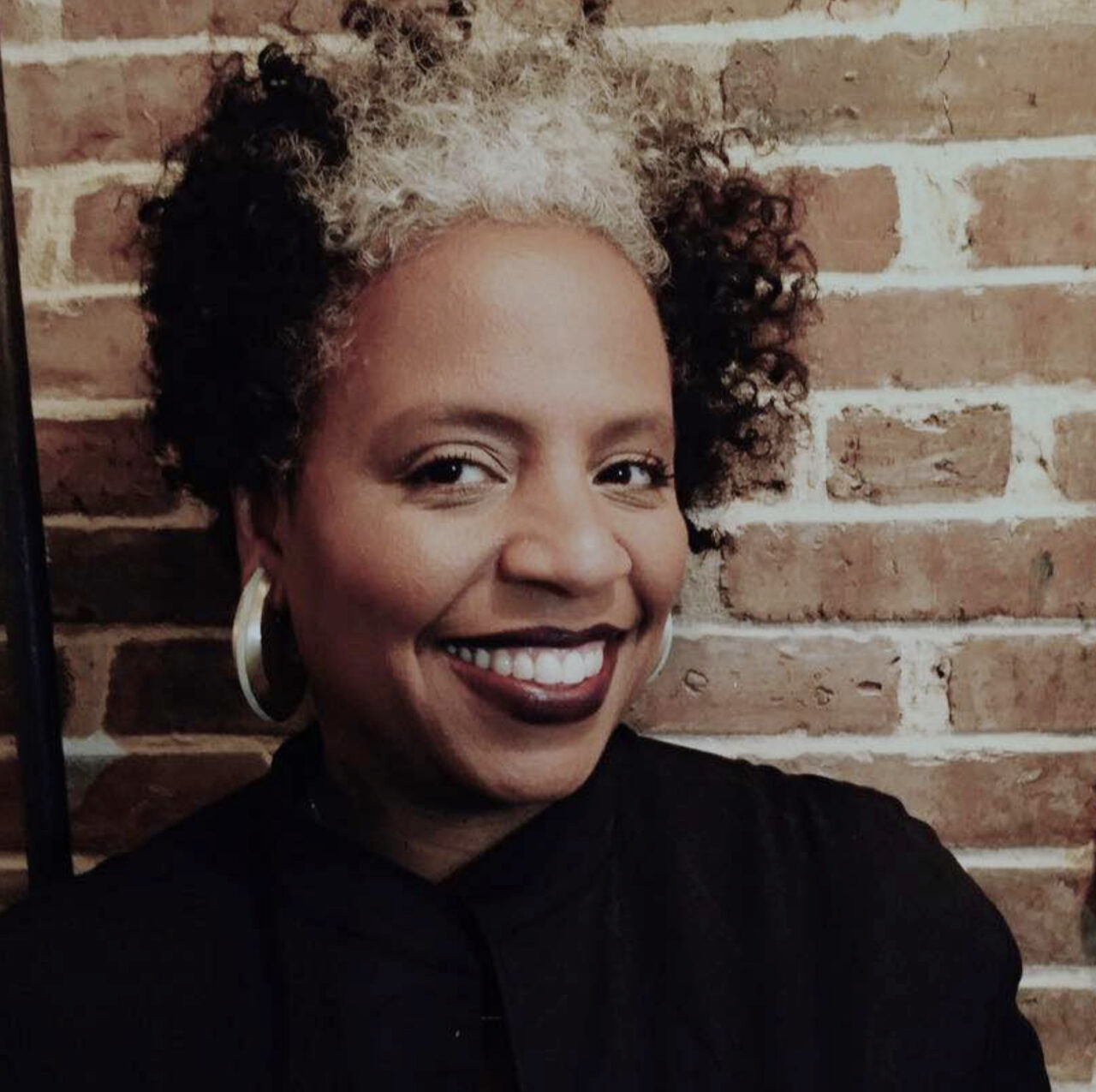Elissa Blount-Moorhead is a Baltimore-based artist, writer, curator, mother, and producer. Blount-Moorhead is an advocate for social change through her interdisciplinary work in visual art, music, design, and film.
She has produced public art events, gallery exhibitions, film screenings, and education programs since the early 90s.
Blount-Moorhead was born and raised in Brooklyn, New York. She lived in the Bedford-Stuyvesant neighborhood in Brooklyn, NY, before moving to Baltimore, Maryland, in 2014. Blount-Moorhead studied at the Syracuse University College of Law and received her degree in 1993, and later received her MFA in Interior Design at Parsons School of Design in 2007.
Blount-Moorhead co-founded Red Clay, a Brooklyn-based nonprofit arts organization dedicated to providing a platform for emerging media and experimental artistic expression. At Red Clay Arts, she curated and produced over 20 exhibitions and programs, in New York and London. These exhibitions include Random Occurrences (2005), a multi-venue exhibition in conjunction with Project Diversity; Cat Calls (2001), a Street Harassment project at St Ann’s Warehouse and the NYC Museum; and an inaugural experimental series Practicum at Bric Arts Media BRIC(2002). With Red Clay Arts, Elissa Blount-Moorhead traveled to Jamaica, where she and her team taught children photography, photojournalism, new media art, and experimental artistic expression.
Blount-Moorhead was the Director of Design, Programming, and Exhibitions at the Weeksville Heritage Center. She was co-curator of Funk, God, Jazz, and Medicine: Black Radical Brooklyn, a collaboration between with Creative Time and Weeksville Heritage Center. This was a walkable month-long art exhibition of four community-based artworks by Xenobia Bailey, Simone Leigh, Otabenga Jones & Associates, and Bradford Young.
She was the Director of RushKids an arts education program administered Rush Arts Gallery (2001-2003).
Elissa Blount-Moorhead created and taught the Cultural Pluralism course for Pratt Institute’s Graduate School of Art and Cultural Management (1999-2011), and at the Parsons Graduate School of Design at Cooper Hewitt since 2012. She lectures and publishes work internationally covering environmental design, history, and museology.
Blount-Moorhead was a co-founder of the art and social practice team, Tandem and TNEG film studio. Elissa Blount-Moorhead began her partnership with cinematographers Arthur Jafa (“Daughters of the Dust,” “Crooklyn,” “Dreams Are Colder Than Death,” “Florida Water”) and Malik Sayeed (“He Got Game,” “Belly”) in 2013, establishing the film studio TNEG. Their goal is to develop and produce new black independent films, but films that will also “push what we understand to be new black cinema and to create not just new narratives, but also new aesthetics and technical parameters within black cinema.” She says, “I feel like independent film in general is becoming more well-regarded and more supported.
Blount-Moorhead wrote P is for Pussy in 2015, a “children’s” alphabet picture book filled with double-entendres.
